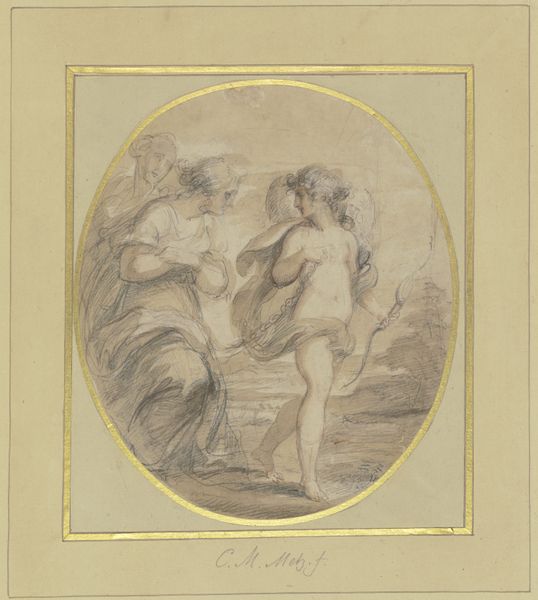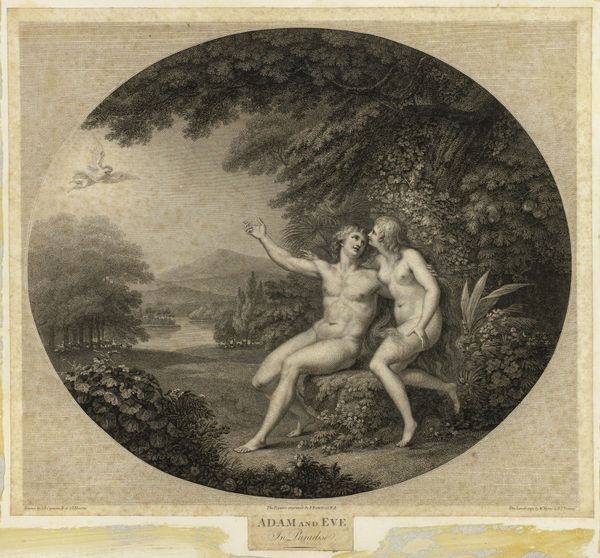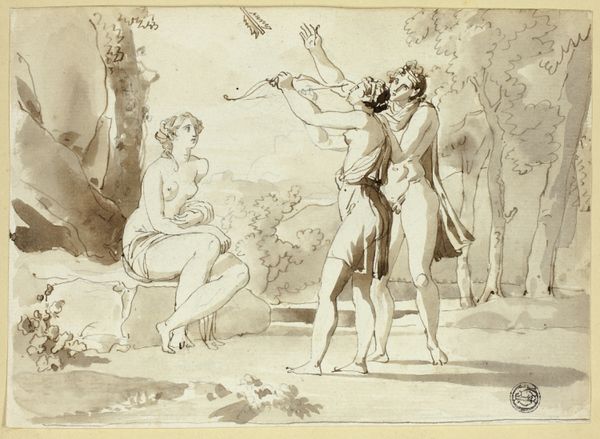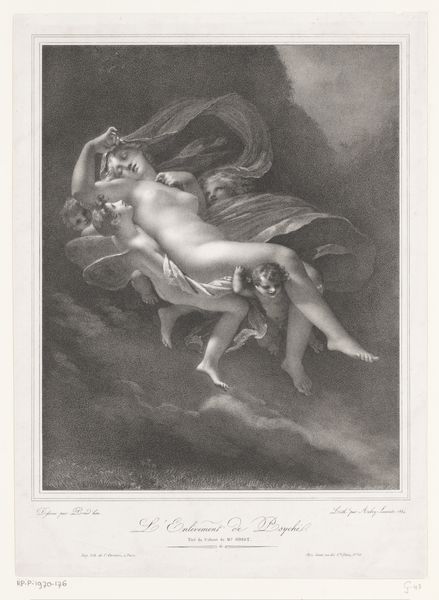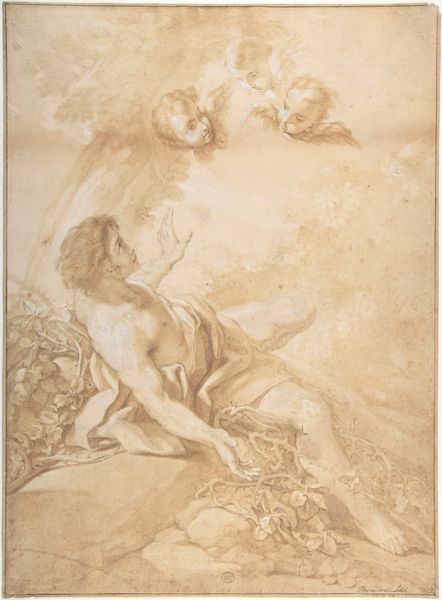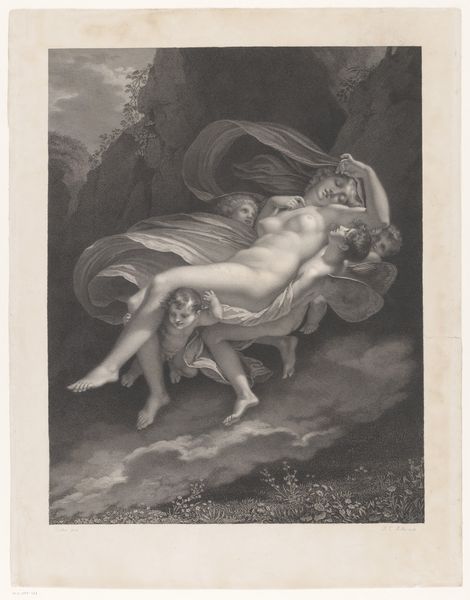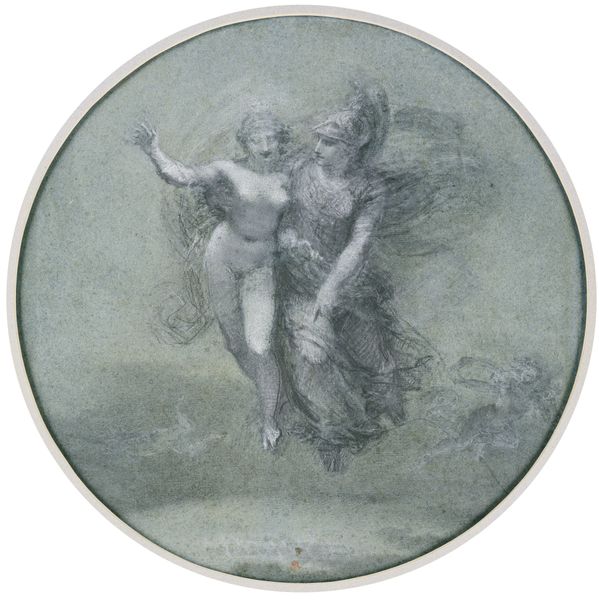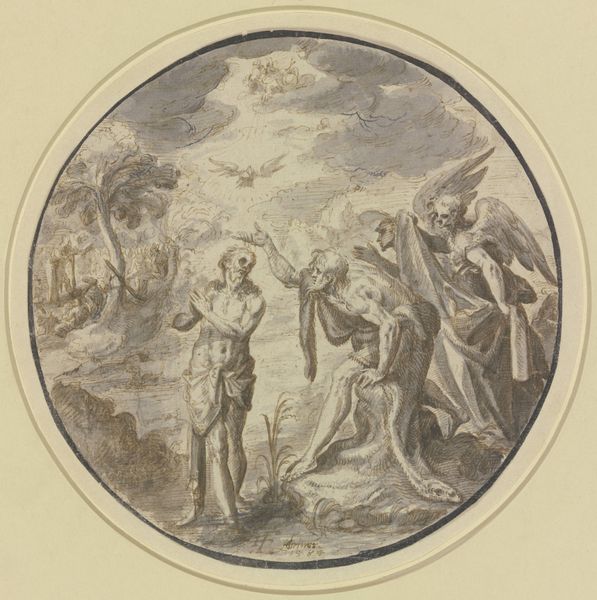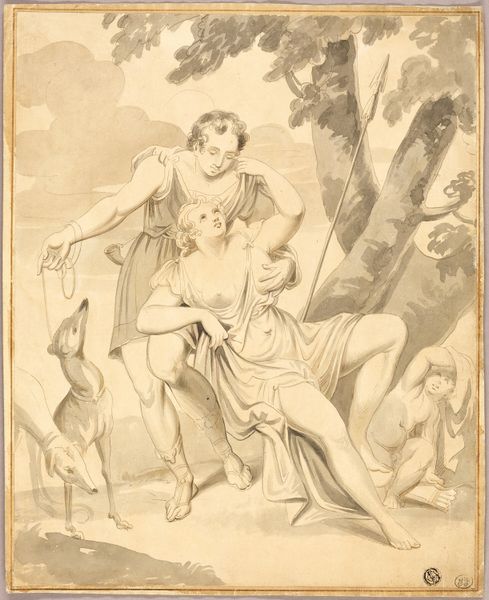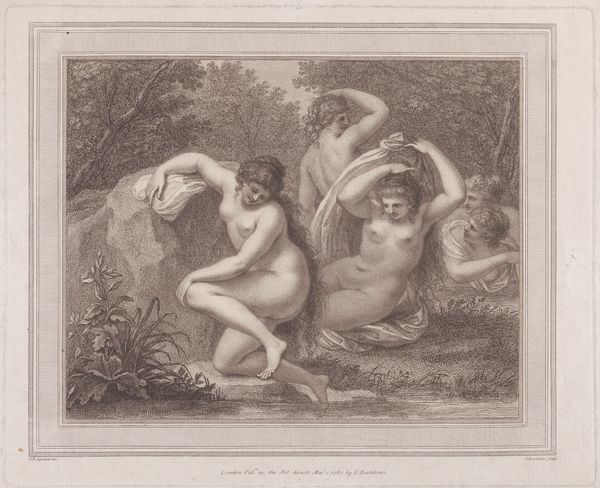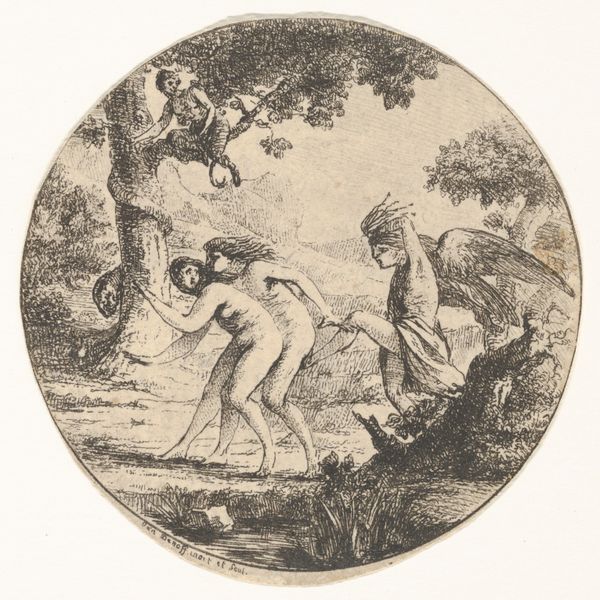
drawing, print, paper, watercolor, ink, chalk, graphite, pen
#
drawing
#
narrative-art
# print
#
landscape
#
charcoal drawing
#
figuration
#
paper
#
charcoal art
#
oil painting
#
watercolor
#
ink
#
chalk
#
graphite
#
pen
#
watercolour illustration
Dimensions: 289 × 353 mm
Copyright: Public Domain
Curator: We are looking at Giovanni Battista Cipriani's "Adam and Eve in Paradise." It’s rendered with ink, watercolor, graphite, chalk, and pen on paper, here in the Art Institute of Chicago. Editor: The work has such a gentle, almost dreamlike quality. The softness of the lines and the monochrome palette create a scene of quiet intimacy, almost as if we are intruding upon a private moment. Curator: It’s interesting you say that because Cipriani, a Florentine artist who thrived in England, often navigated between private commissions and public consumption. These depictions of Adam and Eve gained popularity through reproductive prints— circulating the visual narrative far beyond its original context. This piece subtly blends personal idealism with prevailing social and religious narratives. Editor: I see it. The composition, while seemingly straightforward, has a deliberate asymmetry. Adam's gesture directing our gaze towards the landscape creates a visual tension. And his relaxed pose contrasts Eve’s posture and closeness. There’s an unspoken dialogue happening in their bodies. Curator: Precisely. And Cipriani, operating within the neoclassical movement, deliberately looked to biblical subject matter, as it would appeal to powerful interests that also happened to be invested in a burgeoning market for religious art prints. While figures seem timeless, we must view this work in the social currents and commercial conditions that enabled and motivated its creation. Editor: Absolutely. Focusing on the semiotics, Adam points to something external, a horizon, representing a promise of things unseen, while Eve whispers into his ear: this emphasizes the dynamic relationship of knowledge, persuasion and nascent transgression. What strikes me, however, is the formal composition itself—the artist does manage to evoke the thematic undertones of original sin. Curator: In a time where artistic expression increasingly served ideological functions for varied segments of society, works like these show the fusion between myth, morality, and artistic enterprise. The landscape background with delicate drawing work supports the centrality of humans in divine design, mirroring how society might envision and dictate their place in social order. Editor: Reflecting on it, this delicate drawing serves as an intricate lens into faith and representation; the image resonates on a profound level with visual strategies of persuasion in a market setting. Curator: Indeed, the interplay of private sentiment and public symbolism truly encapsulates the historical weight imbued in Cipriani’s representation.
Comments
No comments
Be the first to comment and join the conversation on the ultimate creative platform.
